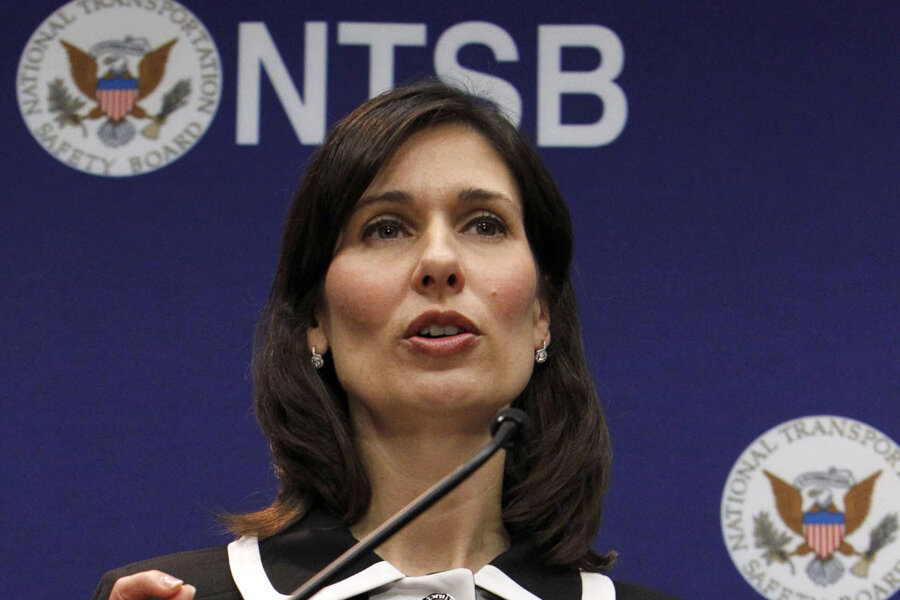Drunk driving: Why is MADD among critics of lower alcohol limit?
Loading...
On its surface, the recommendation seems simple: reduce the legal limit for blood-alcohol content (BAC), and drunken-driving fatalities will fall, too.
But nearly as soon as the National Transportation Safety Board (NTSB) made that proposal Tuesday, a chorus of dissent began. Lower the BAC limit, critics argued, and you criminalize responsible social drinkers – and do little to make the roads safer.
And the opposition came from some unlikely corners.
“As a mother whose daughter was killed by a drunk driver, the most important thing to me is that we save as many lives as we can as soon as possible,” says Jan Withers, president of Mothers Against Drunk Driving (MADD). “The issue with lowering the legal limit is that it will take a lot of effort for a potential result that is many, many years down the line.”
While MADD doesn’t oppose the idea of lowering the legal limit in principle, it’s the wrong place for the government to focus its efforts against drunken driving now, she says. It’s a critique mirrored by many involved with drunken-driving policy issues.
The NTSB is proposing that the legal limit for BAC be reduced from its current level of 0.08 to 0.05.
There’s no neat correlation between blood-alcohol level and drinks consumed, but in general, a 140-pound person could consume three drinks and fall below the 0.08 ceiling, and a 180-pound person four. But if the limit were set at 0.05, that would drop to two drinks or less for the smaller person and three for the larger.
“The fact is, many alcohol-involved traffic incidents aren't caused by alcoholics, but just people who had one too many, and lowering the legal limit helps deter those people,” says Thomas Babor, an expert on alcohol abuse at the University of Connecticut’s medical school in Farmington.
Indeed, both supporters and critics of the NTSB recommendation agree on that point: Drunken drivers shouldn’t be on the road. But how you make that happen is a sticking point.
According to the NTSB, a driver with a BAC of 0.05 is 38 percent more likely to be in a crash as compared with a completely sober driver, and a driver with a level of 0.08 is 169 percent more likely. (The figure rises to nearly 400 percent when the driver has a BAC of 0.10.)
At 0.05, individuals are “as distracted as you are when you have the radio up too loud,” says Sarah Longwell, managing director of the American Beverage Institute, a trade organization.
“This would have a devastating impact on the hospitality industry while having no corollary benefit for public safety,” she says.
Instead, she says, the government should focus its efforts on the “hard-core drunk drivers” responsible for the majority of alcohol-linked road deaths. That means better education around drinking and driving and a focus on technologies like the ignition interlock, a small device like a breathalyzer installed on a car’s dashboard that forces the driver to demonstrate sobriety before he or she can start the vehicle.
MADD supports many of these efforts, too, and says government needs to redouble its efforts to enforce the laws it already has in place to stop impaired driving.
Since the 1980s, organizations like MADD have successfully launched public-awareness campaigns that have stigmatized drunken driving and led to more-stringent limits across the country.
Consequently, crashes with alcohol-impaired drivers plunged more than 50 percent – from 21,113 in 1983 to 9,878 in 2011 – and the proportion of highway fatalities resulting from crashes with a drunken driver fell from half to a third.
But now, such statistics are plateauing, the NTSB says.
“Most Americans think that we’ve solved the problem of impaired driving, but in fact, it’s still a national epidemic,” said NTSB chair Deborah Hersman in a statement. “On average, every hour one person is killed and 20 more are injured.”
Reducing the legal limit, the agency argues, would also better align the United States with the global consensus on impaired driving. More than 100 countries already have BAC limits at 0.05 or below, the NTSB says, including 25 of the 27 members of the European Union. Several nations, including Russia, Brazil, Hungary, and Nepal, have a legal limit of zero, and a host set the standard at 0.02 or 0.03, according to the International Center for Alcohol Policies.
The NTSB does not make law: It can only make recommendations to the states and federal government. It is likely to continue facing stiff opposition. Still, Dr. Babor says, this is something the group should fight for.
“The National Transportation Safety Board wouldn’t have recommended this unless there was overwhelming evidence that it would help," he says.






